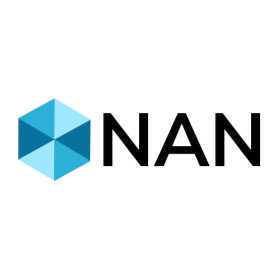Jan 23, 2025
jres_c13.nan
- 1Network for Advanced NMR

Protocol Citation: NAN-KB UGA 2025. jres_c13.nan. protocols.io https://dx.doi.org/10.17504/protocols.io.5qpvor567v4o/v1
License: This is an open access protocol distributed under the terms of the Creative Commons Attribution License, which permits unrestricted use, distribution, and reproduction in any medium, provided the original author and source are credited
Protocol status: Working
We use this protocol and it's working
Created: October 03, 2022
Last Modified: January 23, 2025
Protocol Integer ID: 70740
Keywords: nmr, carbon, 1d
Funders Acknowledgements:
NSF
Grant ID: 1946970
Abstract
This is a protocol for running a 2D carbon-carbon homonuclear JRES pulseprogram 'jresdcqfsp.pp'.
It will provide a dataset where F2 gives the carbon 1D signals according to chemical shift and the indirect F1 dimension shows the carbon-carbon scalar coupling patterns.
This pulse program is only useful for 13C isotope enriched samples that have sufficient populations of C13-C13 pairs.
The original Bruker pulseprogram jresdcqf was modified by changing the hard 180 refocussing pulse to an adiabatic shaped pulse.
It is important that a 1D carbon data set is collected first to establish suitable parameters for adequate SW, O1 and S/N.
Before start
A sample must be inserted in the magnet either locally by the user after training ( see Guidelines) or by facility staff if running remotely.
You must collect a proton 1D spectrum on a sample that is shimmed and has a calibrated 90 degree proton pulse - see protocol noesypr1d_metab.nan.
Then collect a 1D carbon spectrum - see protocol carbon1d.nan.
Sample is in magnet, locked, tuned and shimmed
Sample is in magnet, locked, tuned and shimmed
The following steps assume the sample is in the magnet and is locked, tuned and shimmed and a proton 1D spectrum has been acquired with a calibrated 90 degree pulse.
In addition, a 1D carbon spectrum should be acquired to establish SW , O1 and NS parameters for carbon and suitable proton decoupling parameters.
Create JRES_C13 experiment file
Create JRES_C13 experiment file
Starting from either the 1D proton or carbon data sets, click on Acquire -> 'Create Dataset' button to open dataset entry box.
It should increment the EXPNO to the next integer ( e.g. 3)
Edit the Title text box with appropriate sample information and indicating JRES acquisition
Check 'Read parameterset' box, and click Select.
For standard NAN parameter sets, change the Source directory at upper right corner of the window:
Source = /opt/NAN_METAB/par
Click 'Select' to bring up list of parameter sets. Select JRES_C13_xxx.par , where xxx = 900 or other spectrometer frequencies plus sample origins ( e.g. JRES_13_900_duckweed.par)
Click OK at bottom of window to create the experiment directory.
It will be the active experiment in the acquisition window and should now be listed in your data directory.
The actual pulse sequence is named 'jresdcqfsp.pp'.
Load and adjust typical parameters.
Select the 'Acqpars' tab (or type ased) which brings up the page of common and pulse program specific parameters.
The complete list of parameters can be accessed by clicking on the 'A' at upper left menu, or typing eda.
There should be parameters for both 13C (f1) and 1H (f2) channels.
'ased' parameters: should be similar to carbon 1d
'eda' parameters: shows 2D (F2, F1) parameters.
Indirect dimension F1 only has 50 points and 150 Hz spectral window.
Update probe and solvent dependent parameters.
Clicking the menu item 'Prosol' , or typing 'getprosol' in the command line will update the 13C parameters, HOWEVER it will also load the DEFAULT proton parameters, NOT the calibrated pulse width obtained from the proton data set in step 1.
Instead type the following command:
Command
getprosol 1H [calibrated P1 value] [standard 1H power level]
where [calibrated P1 value] is the 90 degree proton pulse width obtained with 'pulsecal' ( step 1)
and the [standard 1H power level] is the power level set for this proton pulse ( step 1, e.g. found in parameters of proton dataset EXPNO 1). This power level is established when the probe is installed and will be different for different spectrometers and probes.
e.g. ' getprosol 1H 7.5 -13.14' sets the P1 value to 7.5 usec at -13.14 dB attenuation ( = equivalent to power rating).
Loading parameters in this way ensures that all proton pulse widths ( e.g. CPD decoupling ) are correctly calculated based on the correct proton 90 degree pulse.
Change other parameters as needed.
TD or AQ: 32K or 0.3-0.5sec is adequate for F2 TD/AQ.
-50 is suitable for F1 TD
-
SWH: same carbon spectral window as 1D carbon, typically at least 200 ppm
NOTE: changing SWH will change AQ.
D1: 1-3 seconds is normal; increase to 5 seconds for very slowly relaxing quaternary carbons
DS: dummy scans that are not recorded for steady state equilibration; at least 4
NS: increase for increased signal to noise ( S/N increases as √NS );
O1: carbon frequency offset; center of spectral window. Typically 100 ppm.
O2: proton frequency offset, center of proton region ( e.g. 5 ppm for all protons, 3ppm for aliphatic only)
180 degree shaped pulse length is set to 2ms and the calculated power for that pulse is loaded from the probe file.
Adjust receiver gain.
Click on 'Gain' in the main topspin Acquire menu or type 'rga'.
Typically at maximum value (101 or 203) for weak 13C signal.
Acquire and process data.
Click on 'Run' in Topspin Acquire menu, or type 'zg'.
After the first FID has accumulated, you can process it as a 1D using the 'efp' command
and follow prompts.
When > 8 increments are acquired you can look at the 2D.
Click on 'Proc.Spectrum' on the Topspin Process menu.
This will execute an automated processing macro and show a low resolution 2D spectrum. It will give some idea of the signal to noise and so you can decide to continue or restart with greater number of scans ( NS).
